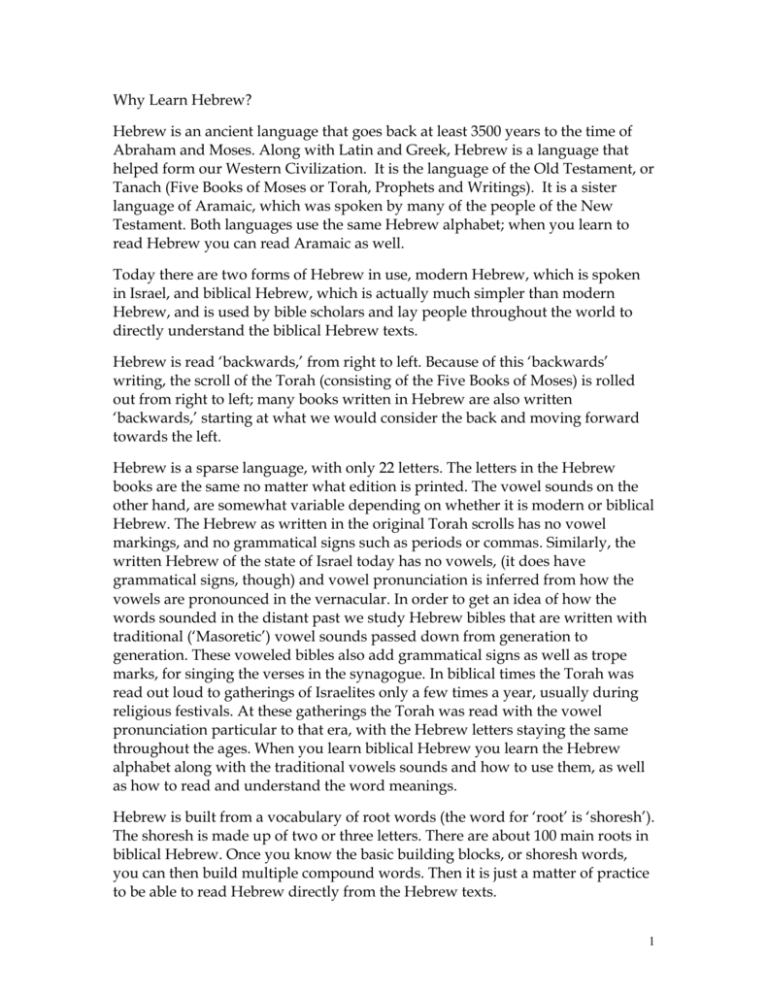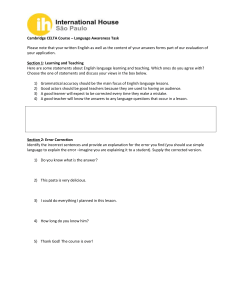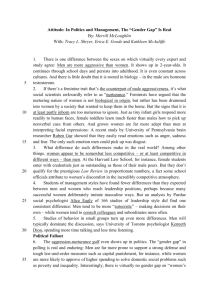u - studytorah.com
advertisement

Why Learn Hebrew? Hebrew is an ancient language that goes back at least 3500 years to the time of Abraham and Moses. Along with Latin and Greek, Hebrew is a language that helped form our Western Civilization. It is the language of the Old Testament, or Tanach (Five Books of Moses or Torah, Prophets and Writings). It is a sister language of Aramaic, which was spoken by many of the people of the New Testament. Both languages use the same Hebrew alphabet; when you learn to read Hebrew you can read Aramaic as well. Today there are two forms of Hebrew in use, modern Hebrew, which is spoken in Israel, and biblical Hebrew, which is actually much simpler than modern Hebrew, and is used by bible scholars and lay people throughout the world to directly understand the biblical Hebrew texts. Hebrew is read ‘backwards,’ from right to left. Because of this ‘backwards’ writing, the scroll of the Torah (consisting of the Five Books of Moses) is rolled out from right to left; many books written in Hebrew are also written ‘backwards,’ starting at what we would consider the back and moving forward towards the left. Hebrew is a sparse language, with only 22 letters. The letters in the Hebrew books are the same no matter what edition is printed. The vowel sounds on the other hand, are somewhat variable depending on whether it is modern or biblical Hebrew. The Hebrew as written in the original Torah scrolls has no vowel markings, and no grammatical signs such as periods or commas. Similarly, the written Hebrew of the state of Israel today has no vowels, (it does have grammatical signs, though) and vowel pronunciation is inferred from how the vowels are pronounced in the vernacular. In order to get an idea of how the words sounded in the distant past we study Hebrew bibles that are written with traditional (‘Masoretic’) vowel sounds passed down from generation to generation. These voweled bibles also add grammatical signs as well as trope marks, for singing the verses in the synagogue. In biblical times the Torah was read out loud to gatherings of Israelites only a few times a year, usually during religious festivals. At these gatherings the Torah was read with the vowel pronunciation particular to that era, with the Hebrew letters staying the same throughout the ages. When you learn biblical Hebrew you learn the Hebrew alphabet along with the traditional vowels sounds and how to use them, as well as how to read and understand the word meanings. Hebrew is built from a vocabulary of root words (the word for ‘root’ is ‘shoresh’). The shoresh is made up of two or three letters. There are about 100 main roots in biblical Hebrew. Once you know the basic building blocks, or shoresh words, you can then build multiple compound words. Then it is just a matter of practice to be able to read Hebrew directly from the Hebrew texts. 1 The instruction given in this book is based on the way Hebrew is read today in the synagogue, with the pronunciation most used throughout the world. The order of each lesson will be: 1. 2. 3. 4. 5. 6. 7. say the pronunciation write out and say the 22 Hebrew letters write out and say the 5 sofiyth (final) forms write out the vowels write out and say the 4 dageysh forms and 2 dot forms write out the prefixes write out the suffixes Hebrew Pronunciation: a – as in father e – as in red ey – as in hey i – as in sit o – as in so u – as in ‘Sue’ ay – as in aye-aye ey – as in hey iy – as in ski oy – as in boy uy – as in buoy ch – as in Loch or Bach ah – sort of like an ‘aauh’ sound you make when the doctor tells you to stick your tongue out to go ‘aauh’ but further back in the throat. This sound does not have an actual English equivalent, but in Hebrew it is referred to as ‘gutteral,’ as it comes up from the gut. tz – as in ‘Mr. Katz’ 2 th – t as in ‘Thomas. ‘ Originally the ‘th’ was pronounced as we do today in English, as in ‘thin’ (such as ‘Sabbath’ or ‘Beth Israel’), but today it is pronounced mostly as a t. ‘ (apostrophe) – when a syllable is marked with an apostrophe, it makes the sound of the letter: b’ makes the b sound, g’ makes the g (as in gorilla) sound, d’ makes the d sound, and so on, as used with a shva. Say the sounds from right to left: (start here) th tz Thomas Katz ah guttural-ah ch uy oy iy ey ay u o i ey Bach buoy boy ski hey aye Sue so sit hey e a red father The Letters: The Hebrew alef-beyth has 22 letters: read from right to left: (start here) H B G A h d hey daleth K Z D Y g (as in gorilla) giymel b (silent) beyth U alef X W ch y t ch z v chaf yud teyth cheyth zayin vav 3 P M E S N L f (silent) s n m l fey ahyin samech nun mem lamed T Q w R C th sh r q tz thav shiyn reysh quf tzadiy To remember the letters, say them to a rap rhythm. Writing the Letters: Write out the Hebrew letters using the worksheet that follows. The alef is the most complicated to draw: 1. First make a rectangular box (as a guide), taller than it is wide; 2. Make a diagonal in the box from upper left to lower right; Continue the alef without the box: 3. Mark off 2 dots to divide the diagonal into 3 equal parts; 4 4. From the upper dot, make an S-shape ending in the lower left corner; 5. From the upper right corner make a question mark, ending at the lower dot. The reysh R , is a basic shape in this particular font, and is found in several letters, including beyth, hey, cheyth, chaf, fey, and thav. Write the letters as illustrated, from right to left. 5 6 7 The Hebrew letters are all considered consonants, several with unique pronunciations. Two letters, alef Inside a word, the alef A and ahyin E, are silent. A remains silent and can stand alone or take a vowel sound; when the alef is used with a vowel, the alef remains silent and the syllable makes the sound of the vowel alone. The ahyin E also remains silent but is always associated with a vowel; it changes the sound of the vowel into a guttural sound (low in the throat, from the ‘gut’). Two letters, cheyt X and chaf K, are pronounced in the back of the throat. cheyth: low ch as in Loch (low in back of the throat, from the ‘gut’) chaf: high ch as in Bach (high in back of the throat) Two letters, vav W and yud Y, can be pronounced as consonants or vowels. vav W: 1. consonant: vav W = v 2. vowel: with a dot above: cholem-vav/vav-o 3. vowel: with a dot inside: shureq/vav-u l = o as in ‘so’ g = u as in ‘Sue’ 8 yud Y: 1. consonant: Y = y as in ‘yes’ 2. vowel: Y = i as in ‘sit’ The sofiyth forms change shape at the end of a word. Five letters , called final or ‘sofiyth’ forms, change shape (either unfolded, or boxed like the mem sofiyth) when they occur at the end of a word, but they are pronounced the same: from right to left: V K chaf sofiyth chaf O M mem sofiyth mem I N nun sofiyth nun 9 F P fey sofiyth fey J C tzadiy sofiyth tzadiy The dageysh: The dageysh is a dot used inside a letter to change the sound of the letter it contains. Even though the letters of the Hebrew alphabet are the same throughout the ages, with some letters the pronunciation has changed over the years, and this pronunciation change is marked with a dageysh. The dageysh makes the letter sound hard, for example going from a v sound without the dageysh to a b sound with it. You will see this dageysh in many letters in the Masoretic text (the Hebrew as written with vowels and other markers, as opposed to the Scroll text, written without any markers), but only a few dageysh letters are used now to change the sound in today’s pronunciation. Four are used today: from right to left: t k p b t p k b 10 thav pey kaf beyth b beyth: with a dageysh the hard ‘b’ B veyth: without a dageysh the soft ‘v’ k kaf: with a dageysh the hard ‘k’ K chaf: without a dageysh the soft, high ch as in Bach p pey: with a dageysh the hard ‘p’ P fey: without a dageysh the soft ‘f’ t T thav: with a dageysh the hard ‘t’ as in Thomas sav: without a dageysh the soft ‘s’ as in Sue Throughout the Masoretic text, you will see many dageysh marks on letters, but you can ignore them. In times past they were used to pronounce letter sounds that were used in other cultures, but not in our own today. 11 Two letters, vav W and shiyn w, use dots that are not ‘dageysh’ marks, but still change the sound of the letter: W l g vav: v cholem-vav/vav-o: o shureq/vav-u: u w shiyn: with a dot on the right, is pronounced ‘sh’ s siyn: with a dot on the left (think of the Latin ‘sinestre,’ meaning left) is pronounced ‘s’ Write the letters of the expanded alef-beyth, and say the names as you write them: B b H D G A hey daleth giymel veyth beyth alef 12 k V g l chaf-sofiyth chaf p F fey T t yud teyth cheyth Z zayin shureq cholem-vav vav (vav-o) (vav-u) I N P E S M L pey fey-sofiyth J U X W kaf O K Y ahyin samech nun-sofiyth nun mem-sofiyth mem s w R lamed Q C sav thav siyn shiyn reysh quf tzadiy-sofiyth tzadi The Vowels: The Masoretic (masoretic = traditional) markings are a series of dots and dashes that indicate the vowel sounds in the Masoretic (marked) Hebrew texts. The vowel marking is added to the letter either above, below or to the left of the letter, and is pronounced after the letter in a syllable. There are many different vowel sounds that have been added to the Masoretic text over the millennia. In this workbook you will learn the 7 main vowels sounds (shva, a, e, ey, i, o, u) used to pronounce the 13 vowel markings in the Masoretic text. The vowels are as follows: say the vowel sounds from right to left: 13 g u l oi a f e n m q x v u (Sue) u o o i ey (Sue) (so) (so) (sit) e (hey) (red) e a(o/aw) a(o/aw) a (red) q m n awe) shva: stops the sound of the letter, marked with an apostrophe’, or ends the syllable. Inside vowels, x (shva) (father/so/ (father/so/ (father) (father) (stops sound) awe) v a patach: fnq shva makes the vowel sound short. long ‘a’ as in father chatef patach: qametz: shortened ‘a’ in father long ‘a’ as in father; (sometimes long ‘o’ as in ‘so’ or ‘aw’ as in ‘awe’) chatef qametz: shortened ‘a’ in father; (sometimes shortened ‘o’ as in ‘so’ or ‘aw’ as in ‘awe’) 14 e f a i o l u g segol: ‘e’ as in red chatef segol: shortened ‘e’ as in fed tzeyrey: ‘ey’ as in hey chireq: ‘i’ as in sit cholem: ‘o’ as in so cholem vav (or vav-o): ‘o’ as in so qibutz: ‘u’ as in Sue shureq (or vav-u): ‘u’ as in Sue Say the vowel sounds: from right to left: 15 g u l oi a f e n m q x v u u o o i ey e e a(o/aw) a(o/aw) a a (shva) Write the vowels from right to left. When followed by a yud Y, add a ‘y’ to the vowel sound: read from right to left: Yl Yg Yi YWm Ya Ye Ym Yx oy uy iy ey ey oy ay ay boy buoy ski hey hey boy aye aye Syllables: In Hebrew, a syllable is made with one vowel and one or two letters (occasionally, three letters): One vowel = One syllable Read the letter first, then the vowel: right to left: 16 ִָׁר ְר ַר ְר ר ra tz’ na f’ shi ִּר ַר ַר na tha thi The one exception to One vowel = One syllable is when a syllable ends with a shva. The shva can either stop the sound of the letter to make its own syllable or it can combine with the vowel before it to end a syllable. One vowel + end shva can make One syllable ְַ ר ְךמ ִׁר ְר eth or e’th’ mach or ma’ch’ fish or fi’sh’ ִׁר ִּ ר tash or ta’sh’ Exercises: v shva: Since the alef A and ahyin E are silent, neither one can take a shva. Write all the letters except A and E add a shva v under each letter, and pronounce the syllable: (the unfolded letters, such as the chaf sofiyth, have the shva inside them, c because it looks better that way). 17 k V G K Y J C p F P S I N O L T t w D B b Q M U X Z W H s R All the other vowels have sounds of their own and can be used with all the letters. Now write all the letters, add a patach x under each letter and pronounce the syllable: 18 k V K Y U X Z W H D G B b A Q J C p F P E S I N O M L T t w s R Write the letters, add a chatef patach q under each letter and pronounce the syllable: Write the letters, add a kamatz m under each letter and pronounce the syllable: 19 Write the letters, add a chatef kamatz n under each letter and pronounce the syllable: Write the letters, add a segol e under each letter and pronounce the syllable: Write the letters, add a chatef segol f under each letter and pronounce the syllable: Write the letters, add a tzeyrey a under each letter and pronounce the syllable: i Write the letters, add a chireq under each letter and pronounce the syllable: Write the letters, add a cholem o to the left of each letter and pronounce the syllable: Write the letters, add a cholem vav/vav-o l to the left of each letter and pronounce the syllable: Write the letters, add a qibutz u under each letter and pronounce the syllable: 20 Write the letters, add a shureq/vav-u g to the left of each letter and pronounce the syllable: Words Words in Hebrew are made of at least one letter, and can stand alone or are combined into what are called a ‘binyan,’ or ‘building’ (plural, binyaniym, ‘buildings’). When used in a binyan as a prefix, the following individual letters are words: One-letter prefixes: in- -ב the- -ה and- -ו like- -כ to- -ל from- -מ of- -ׁש Memorize these words so that you can easily recognize them in the binyaniym. 21 The Shoresh (root) and Binyan (building) Hebrew words are built from letters like building blocks. The Hebrew word for ‘building’ is IYNb ‘binyan’ (plural OYNYNb). You begin to build a binyan with a ‘root’ or ‘shoresh’ (plural ‘shoreshiym’), which is two or more letters put together in a particular pattern. The shoresh by convention is the past tense masculine singular verb, and is pronounced with the patach, ‘a’ sound, as in ‘father.’ You then add more letters in front of or behind the shoresh as prefixes and suffixes to expand its meaning. As long as you recognize the shoresh you can identify the basic meaning of a binyan. Here we will build the binyan ‘and-in-your-seeing’ from the root ‘saw,’ two prefixes ‘and’ and ‘in,’ and one suffix, ‘your.’ For example, the combination of the two letters ‘saw.’ When you add the prefix becomes ו רא pronounced ra’a, means (vav) which in this context means ‘and,’ it ורא v-ra’a, ‘and-saw.’ Adding the prefix וברא ב (veyth) which in this context means ‘in’ it becomes v-v-ra’a, ‘and-in-seeing.’ This can also be pronounced u-v-ra’a, as it sounds better and more fluid than v-v-ra’a. 22 Adding the suffix ך (chaf sofit) which in this context at the end of a shoresh means ‘your,’ the binyan becomes ובראך u-v-ra’a-cha, ‘and-in-your- seeing.’ In all these binyaniym you can still see the original shoresh, רא ra’a, and when reading the text you can figure out what the ‘add-ons’ are and then figure out the meaning of the whole binyan. In this way Hebrew becomes a series of prefix and suffix words built around the shoresh root. Shoresh Now you will learn some shoresh (root) words. By convention, the verb shoresh is written and pronounced in the masculine singular past tense verb form (the simplest form of the root) and is pronounced with the patach ‘a’ vowel like ‘father.’ אהב באהב ובאהב זכר וזכר ולזכר ahav he loved אהב ב באהב ו Add Add to to to make ‘v-ahav’ ‘in-love’ to make ‘u-v’-ahav’ ‘and-in-love’ . zachar he remembered זכר ו וזכר ל Add Add to to to make ‘v-zachar’ ‘and-remembered’ to make ‘v-l-zachar’ ‘and-to-remember’ . . 23 Nouns can also be used as roots for buildings ׁשנה הׁשנה shanah year ׁשנה ה וׁשנה ה ל Add Add to and to make ‘ha-shanah’ ‘the-year’ to to make ‘u-l-ha-shanah’ ‘and-to-the-year’ ולהׁשנה . ראׁש מראׁש rosh head Add ראׁש מ בראׁש כ to Add to make ‘m’-rosh’ ‘from-head’ to . to make ‘ch’-m’-rosh’ ‘like-from-head’ כמראׁש . Recommended Books Shottenstein ED Interlinear Chumash Complete in 1 Volume The Torah, Haftaros and Five Megillos with an interlinear Translation and a commentary anthologized from the Rabbinic writings. 24 Artscroll This is the Jewish interlinear (word-for-word under the Hebrew text) translation of the Five Books of Moses (Torah), parts of the Prophets as read in synagogue each week (Haftaros) and five of the Writings (Five Megillos), with lots of commentary by great rabbis of the past. The Interlinear NIV (New International Version) Hebrew-English Old Testament Edited by John R. Kohlenberger III Zondervan Publishing House This is the Christian interlinear translation of the entire Old Testament, including the Five Books of Moses, the Prophets and the Writings, with a prose translation of the text in the margin of each page. A Hebrew and English Lexicon of the Old Testament , Brown, Driver, Briggs With an appendix containing the Biblical Aramaic Written by Francis Brown, Samuel Rolles Driver and Charles Augustus Briggs, based on the Hebrew lexicon of Wilhelm Gesenius as translated by Edward Robinson Clarendon Press Affectionately known as BDB (Brown-Driver-Briggs), this is one of the oldest and best Hebrew-English lexicons around. Easy to use once you get used to it. 25








